By Esha Chaudhuri
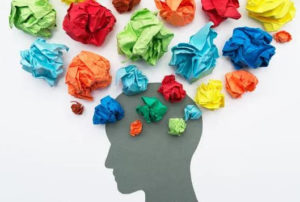 Each year as we approach October 10, conversations on the gravity of mental wellness and mechanisms to cope take centre stage. This year is no different, but of course with its nuances. October 10, the official designation to World Mental Health Day, marking its observation establishes a new trajectory, exacerbated by the journey in and out of the pandemic. Sunday Shillong, hence, engages with mental health professionals to present to its readers the significance of mental wellbeing taking precedence which otherwise goes unnoticed.
Each year as we approach October 10, conversations on the gravity of mental wellness and mechanisms to cope take centre stage. This year is no different, but of course with its nuances. October 10, the official designation to World Mental Health Day, marking its observation establishes a new trajectory, exacerbated by the journey in and out of the pandemic. Sunday Shillong, hence, engages with mental health professionals to present to its readers the significance of mental wellbeing taking precedence which otherwise goes unnoticed.
Mental Lockdown
In recent data shared by GOI’s National Mental Health Programme (NMHP) it is estimated 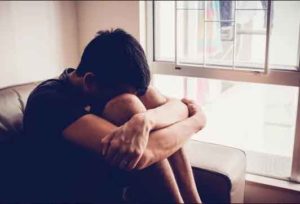 that 6-7 % of the population suffers from mental disorders and more than 90% goes untreated. The World Health Organisation (WHO) estimates that the burden of mental health problems in India is 2443 disability-adjusted life years (DALYs) per 100 00 population; the age-adjusted suicide rate per 100 000 population is 21.1.
that 6-7 % of the population suffers from mental disorders and more than 90% goes untreated. The World Health Organisation (WHO) estimates that the burden of mental health problems in India is 2443 disability-adjusted life years (DALYs) per 100 00 population; the age-adjusted suicide rate per 100 000 population is 21.1.
“The pandemic, lockdown and its lifting has highlighted the glaring deficit in our mental health care system. The mental health issues that everyone speaks about are not new. It is just that they are now more visible as the pandemic has been able to reduce the stigma and highlight the fact that it is not the other person who is mentally ill but me and mine also. With the lifting of the lockdown, mental health professionals the world over are grappling with the increase in the number of new cases and exacerbation of pre-existing mental illness.” outlines Dr. Sandi Syiem, Director at SAN-KER.
 “While people were already dealing with pre-existing issues, the pandemic induced lockdown threw people off their rockers. However, returning to the ‘normal’ made it even worse with the peak in April 2022 as we saw a surge in counselling cases with paucity of mental health professionals” explains Lorina Richmond Basaiawmoit, Psychotherapist and Counsellor, The Children’s Hospital.
“While people were already dealing with pre-existing issues, the pandemic induced lockdown threw people off their rockers. However, returning to the ‘normal’ made it even worse with the peak in April 2022 as we saw a surge in counselling cases with paucity of mental health professionals” explains Lorina Richmond Basaiawmoit, Psychotherapist and Counsellor, The Children’s Hospital.
Dwelling on this, Teacher of Psychology at Greenwood High, Bengaluru, Cynthia War says “I feel that the pandemic didn’t unleash mental health problems but it definitely aggravated them. People were forced to confront their problems rather than hide from them. It also brought out the need to take care of oneself.”
 Presenting with figures, Syiem draws attention to the dismal situation with regards to mental health in the country. He says, “The mental health workforce in India is extremely low – there are 0.3 psychiatrists, 0.12 nurses, 0.07 psychologists and 0.07 social workers per 100,000 population. The treatment gap, which is defined as the prevalence of mental illnesses and the proportion of patients that get treatment, is over 70 per cent. The National Mental Health Survey in 2016 found that 10.6% of the population at that point in time suffered from a diagnosable mental illness and studies show that there has been a 20% increase in mental health morbidity post pandemic and lockdown. And to cater to this demographic, India has less than 4,000 mental health professionals!”
Presenting with figures, Syiem draws attention to the dismal situation with regards to mental health in the country. He says, “The mental health workforce in India is extremely low – there are 0.3 psychiatrists, 0.12 nurses, 0.07 psychologists and 0.07 social workers per 100,000 population. The treatment gap, which is defined as the prevalence of mental illnesses and the proportion of patients that get treatment, is over 70 per cent. The National Mental Health Survey in 2016 found that 10.6% of the population at that point in time suffered from a diagnosable mental illness and studies show that there has been a 20% increase in mental health morbidity post pandemic and lockdown. And to cater to this demographic, India has less than 4,000 mental health professionals!”
Same but different
Time and again, the emphasis laid on timely diagnosis and treatment by professionals is paramount. However, while mental health problems vary, given the plethora of existential  realities can be subjective even in terms of the therapy received. As Richmond puts it, “We cannot generalise mental health issues as there are so many factors such as demographics, age, genders, life experiences, cultural backgrounds and each going through their own.”
realities can be subjective even in terms of the therapy received. As Richmond puts it, “We cannot generalise mental health issues as there are so many factors such as demographics, age, genders, life experiences, cultural backgrounds and each going through their own.”
Elaborating on the varied circumstances and challenges faced by different age groups, Basaiawmoit adds, “Preschoolers and toddlers lost out on their developmental hears and with the sudden opening of schools, they went from diapers to age 4, experiences reluctance, anxiety and social withdrawal to take on this new way of life. With older adolescents, there was widespread anxiety, panic and paranoia with regards to academic performance and peer pressure. For young adults and beyond, there were many life-changing decisions and experiences with COVID-19 taking over our lives and the many adjustments with it.”
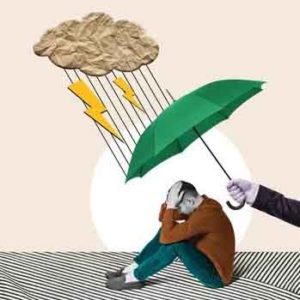 Basaiawmoit further explains, “The impact of COVID-19 has been so specific since some lost their near ones, who need long term assistance, while for others it was the confinement.”
Basaiawmoit further explains, “The impact of COVID-19 has been so specific since some lost their near ones, who need long term assistance, while for others it was the confinement.”
Societal taboo and flippant usage of terms such as ‘crazy’, ‘mental’, ‘mad person’ can be discouraging for those experiencing mental agony and emotional distress.
“I think the stigma around mental health is still a major factor in thwarting progress. We still need to sensitise and bring about awareness regarding mental health and the importance of getting help.” thinks War.
Intervention then becomes case specific with case particular modulations, yet making the subject of advocacy, sensitising uniform.
Way forward
As we’re slowly recovering from the clutches of the pandemic, The All-India Aspiration Index found through a survey that the country’s aspirations are inclined towards mental wellbeing and happiness scoring 87.3, climbing to its highest level since the start of this study in 2018 when it was 87.4.
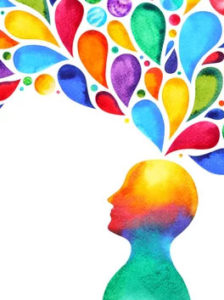 While there is a broad understanding that there is a long path to tread before finding stable grounds with regards to seeking and accessing health, but more importantly, there is also a common consensus that there is need for governmental intervention.
While there is a broad understanding that there is a long path to tread before finding stable grounds with regards to seeking and accessing health, but more importantly, there is also a common consensus that there is need for governmental intervention.
“There are ongoing projects but the pandemic has taught us that there is a need to restructure and strategise them on the basis of the needs of the people made comprehensible by locals in their language” urges Basaiawmoit.
Highlighting the importance of a sensitised community, Basaiawmoit further adds, “We cannot wait for the government to act, we, as a family and society must act responsibly because there needs to be consistency all year round with wider access to care”
As War summarises, “I think that the government can still do more in terms of bringing about a change in the way we handle mental health. I think we are going in that direction. (Hopefully)”
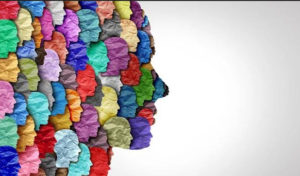 With a vision for constructive change, Syiem states, “A lot of noise and hype is generated around this time and conveniently forgotten the rest of the year. This year let us remember the 52% of our children who admit to being sexually abused, our young women and housewives who have to resort to suicide every year and the elderly with their unique mental health issues. Let us not point fingers at them being those who avail of mental health services and understand that they could somewhere be me. Let us impress upon our elected representatives to think and talk about such issues in private and in public and ask our bureaucrats to lead by example.”
With a vision for constructive change, Syiem states, “A lot of noise and hype is generated around this time and conveniently forgotten the rest of the year. This year let us remember the 52% of our children who admit to being sexually abused, our young women and housewives who have to resort to suicide every year and the elderly with their unique mental health issues. Let us not point fingers at them being those who avail of mental health services and understand that they could somewhere be me. Let us impress upon our elected representatives to think and talk about such issues in private and in public and ask our bureaucrats to lead by example.”
While conversations on mental health, its prioritising and its different grading has begun, there is evidently many miles to tread before we reach an even ground for recess.



